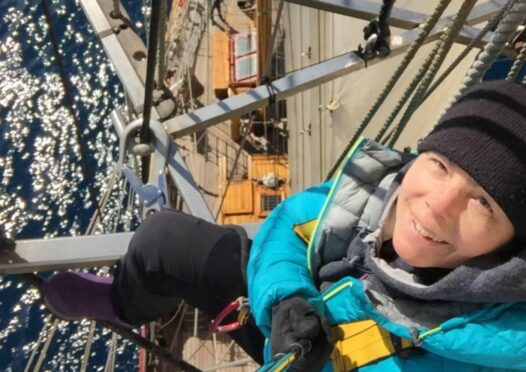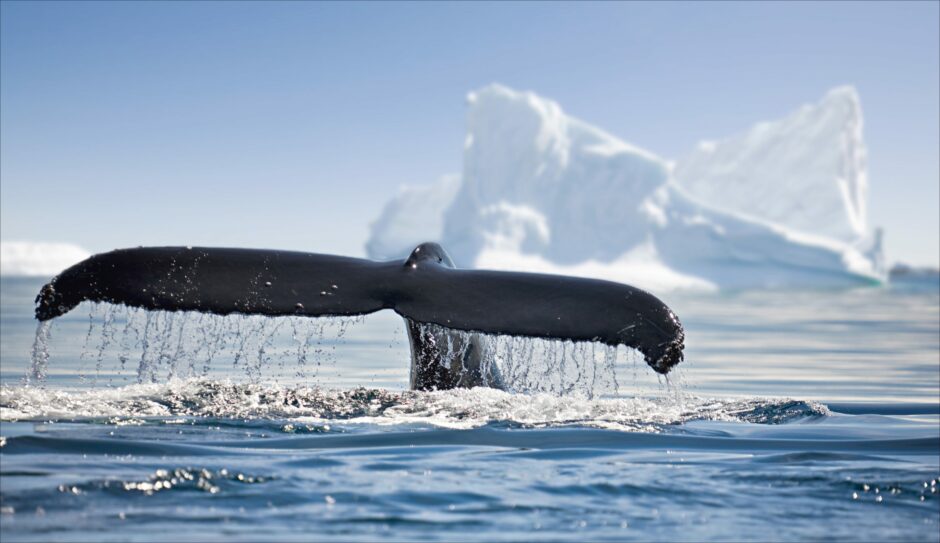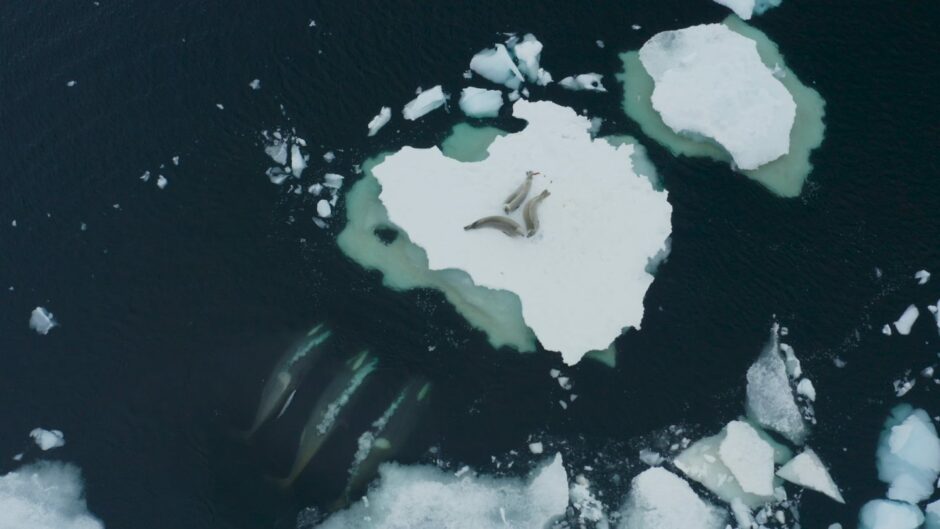
It was to be the adventure of a lifetime. An epic, six-week, tall ship voyage to the world’s last great wilderness.
Sandy Winterbottom, 56, began the journey from Uruguay to Antarctica buoyed by the hope and heroics of 1920s explorer Ernest Shackleton.
But at the midway stop in South Georgia, the climate activist, geologist and environmental scientist had her hopes of a pristine Antarctic shattered when she came face to face with the legacy of the 20th Century whaling industry that decimated the world’s largest mammals and the ecosystems around them.
Today, as the world counts the environmental and human cost of whaling, and in the face of climate change, Winterbottom has charted her voyage in a book.
The Two-Headed Whale: Life And Loss In The Deepest Oceans challenges preconceptions of the Antarctic, splicing in themes of colonialism and capitalism and their links to both environmental and human exploitation. But it is also a call to conflicting voices in the climate debate to strive for mutual understanding and better communication in the hope of a concerted, cohesive and effective approach to the crisis.
It chimes with Sir David Attenborough’s BBC show Frozen Planet II which, more than a decade on from the first series, uses new technology to take viewers to frozen realms on the brink of destruction.
Winterbottom, now a sports and remedial massage therapist in Stirling, said: “I left academia disillusioned and burned out. I came to a point where I needed to just stop and take stock.”
Thoughts of Shackleton’s ill-fated expedition on board the Endurance and his team’s heroic tale of survival filled her head.
“Stories like that give us a strong sense of hope; a sense that actually if the odds are completely and utterly stacked against you it doesn’t mean that you can’t win,” she said.
Just before Christmas 2016, she boarded the three-masted Dutch barque Europa in Montevideo. The voyage through the South Atlantic and the Scotia and Weddell seas would take her to the island of South Georgia, South Orkney Islands, Elephant Island, Antarctic Peninsula, South Shetland Islands and on to Ushuaia in Argentina via the notorious Drake Passage.
Winterbottom, who lives near Dollar, told how, despite hoping to see oceans alive with whales, sightings were few. She said: “It was only when I looked into the history of whaling that I realised how few whales we did see compared to what ought to have been there. I wasn’t prepared for it.”
She was to discover that an estimated two million whales were killed in the Antarctic waters where Japanese fleets are still engaged in the whaling industry to this day.
“The rich oceanic ecosystem I had imagined Antarctica to be was really only an impoverished and plundered version,” she added. “Yet the damage is almost invisible. On the surface, the sea still looks wild and pristine; we don’t see the emptiness below the waves. Documentary makers work harder and harder, look in ever more obscure places, to show us their version of untouched wilderness but the truth is there are barely even pockets of it left.”
Enraged by what she found, she blamed whalers until she stumbled on the grave of 19-year-old Edinburgh man Anthony Ford, a deck galley boy who died in 1952. Not much older than her own son at the time, she says in the book: “It took the breath from me.”
Her efforts to find out about his life were later to reveal how crews were driven to the sea by poverty to work, she claims, for operators putting profit before safety and the wellbeing of their crews. Winterbottom said of her book: “This was my attempt to say these people went into whaling for a reason. There was poverty, there was need and nutritional deficiencies in what was a post-war period.”
But she warned lessons should be learned from the industry which has “parallels” with oil and gas production. “The whaling and the oil industries all started with need but that became overtaken by corporate greed,” she said. “Whaling was a good example in that it started as a market in need of a product but well before the end of it, it was a product looking for a market. It had been superseded in the same way oil has been superseded by renewables but corporate greed is still driving it.”
She cited Sidney Harmer, keeper of zoology and eventual director of the Natural History Museum, who sounded the alarm over unrestricted whaling in 1908 – 78 years before a moratorium was finally called that was, by then, too late.
She writes in the book: “We cannot repopulate the oceans with whales and restore the ecosystems that matured around them, in the same way that we cannot replant rainforests that took millions of years to evolve, only to be cut down for palm oil or beef grazing for burger conglomerates. We cannot undo these mistakes.”
Winterbottom, founder of the Women’s Climate Action campaign group, said: “We have been distracted and greenwashed for too long. We think because we are not using plastic straws we are making a difference, when actually the money in our bank accounts may be funding new fossil fuel investments. There are solutions out there but they are not being talked about because they are not popular.”
She writes: “When we damage precious ecosystems, like the Antarctic, that have taken millennia to evolve, we undermine our own chances of survival. The Earth has been way hotter and colder, it has survived meteor impacts and ice ages, super-volcanoes and extinctions, so it would survive us. It is our own life support system we are destroying.”
As part of her research, the author spent time with retired whalers at their regular gathering in a hotel in Portobello, Edinburgh. She revealed: “One of them gave me a photograph of a two-headed whale, believed to be the earliest recorded incidence of a conjoined twin fin whale.”
Metaphorically, it reflects the twin stories in the book – her own and that of young Anthony Ford – as well as society’s “polarisation” in the climate debate: “It is also a good metaphor for the book in general, which is really about understanding other people’s point of view. We can’t solve the climate crisis and ecological crisis without talking to each other.”
The Two-Headed Whale: Life and Loss in the Deepest Oceans by Sandy Winterbottom is published by Birlinn

Enjoy the convenience of having The Sunday Post delivered as a digital ePaper straight to your smartphone, tablet or computer.
Subscribe for only £5.49 a month and enjoy all the benefits of the printed paper as a digital replica.
Subscribe
